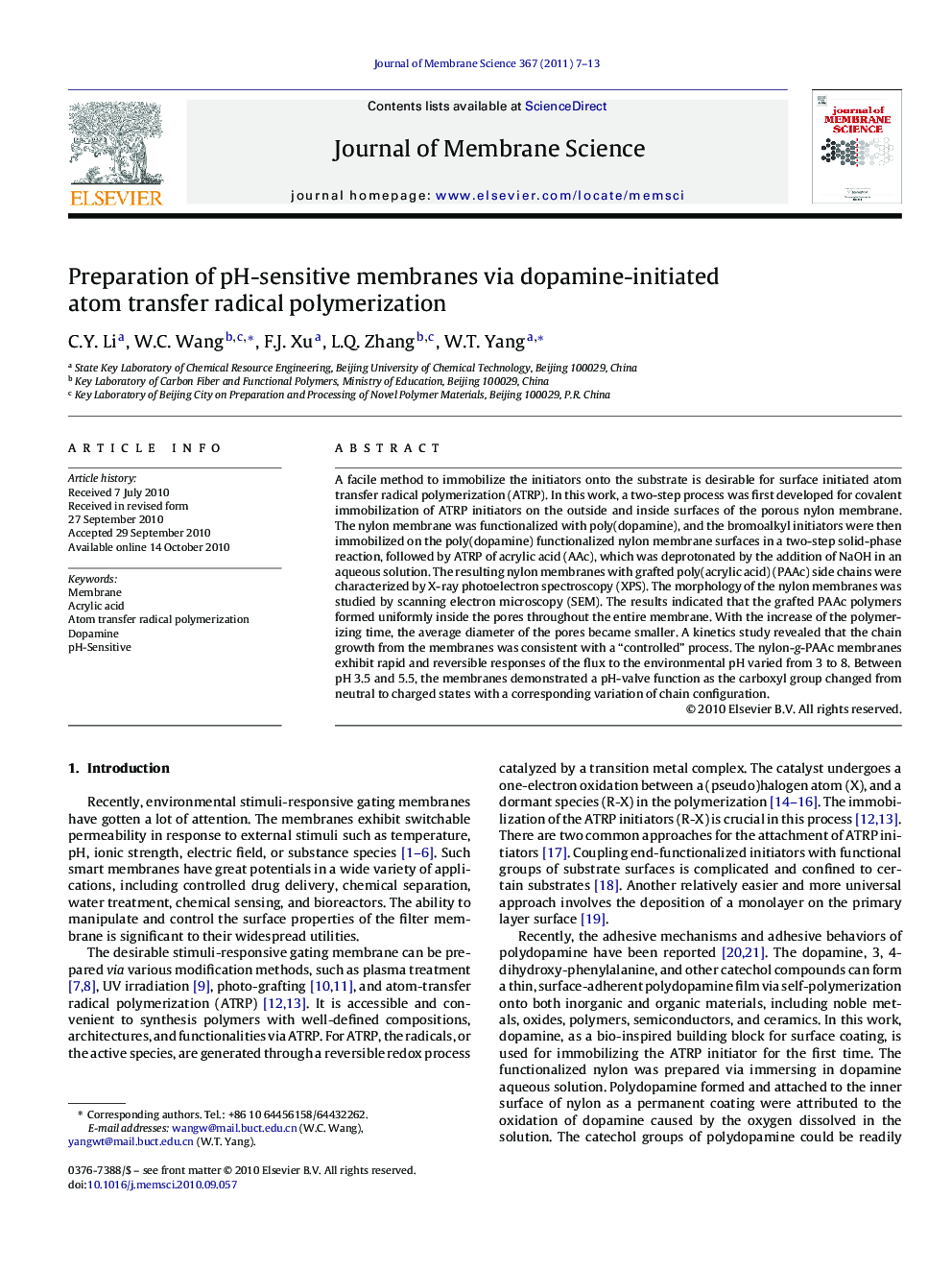| Article ID | Journal | Published Year | Pages | File Type |
|---|---|---|---|---|
| 636007 | Journal of Membrane Science | 2011 | 7 Pages |
A facile method to immobilize the initiators onto the substrate is desirable for surface initiated atom transfer radical polymerization (ATRP). In this work, a two-step process was first developed for covalent immobilization of ATRP initiators on the outside and inside surfaces of the porous nylon membrane. The nylon membrane was functionalized with poly(dopamine), and the bromoalkyl initiators were then immobilized on the poly(dopamine) functionalized nylon membrane surfaces in a two-step solid-phase reaction, followed by ATRP of acrylic acid (AAc), which was deprotonated by the addition of NaOH in an aqueous solution. The resulting nylon membranes with grafted poly(acrylic acid) (PAAc) side chains were characterized by X-ray photoelectron spectroscopy (XPS). The morphology of the nylon membranes was studied by scanning electron microscopy (SEM). The results indicated that the grafted PAAc polymers formed uniformly inside the pores throughout the entire membrane. With the increase of the polymerizing time, the average diameter of the pores became smaller. A kinetics study revealed that the chain growth from the membranes was consistent with a “controlled” process. The nylon-g-PAAc membranes exhibit rapid and reversible responses of the flux to the environmental pH varied from 3 to 8. Between pH 3.5 and 5.5, the membranes demonstrated a pH-valve function as the carboxyl group changed from neutral to charged states with a corresponding variation of chain configuration.
Graphical abstractFigure optionsDownload full-size imageDownload high-quality image (137 K)Download as PowerPoint slideResearch highlights▶ The bromoalkyl initiator was immobilized on the poly(dopamine) functionalized nylon membrane surface in a two-step solid-phase reaction. ▶ Acrylic acid (AAc), which was deprotonated by the addition of NaOH in a aqueous solution, was polymerized on the poly(dopamine) functionalized nylon membrane surface. ▶ The flux of aqueous solutions through the nylon-g-PAAc membranes exhibited a rapid and reversible response on the solution pH in the pH range of 3 to 8.
